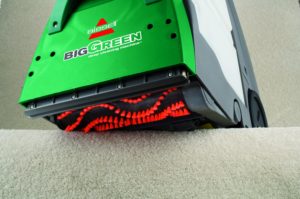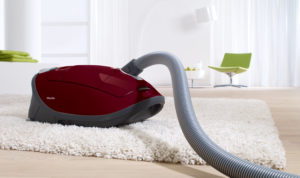
The carpet you choose for your stairs will be the most important carpet you choose for your home. It’s not because everyone’s going to be admiring it (although that would be nice too); it’s because your stairs are the most trafficked part of your home, and beyond choosing a carpet color, style, and pile, you’re also going to need to choose a carpet durable and thick enough to last on your stairs. And yes, you’re probably going to want it to look good when it’s wrapping around stair edges and through any railing posts you have. Today we’ll take a look at which factors make a difference when choosing a carpet that works well for your stairs.
Look for durability when choosing carpets for stairs
No other area of your home receives more foot traffic than your stairs. As a result, if you don’t want a carpet that shreds in a few years, it’s essential to buy one durable enough to support the traffic while looking healthy. In other words, the carpets you choose for your bedrooms might not work for your stairs, although carpets strong enough for your stairs will definitely work for your bedrooms.
When deciding on which carpet to use for stairs, it’s best to choose the highest durability you can find in your budget and preferred style. Remember that carpet durability depends on a number of factors. However, make sure you aren’t choosing a carpet that’s too thick for your stairs.
Thickness is important, but not too much
It’s a common school of thought that thickness in a carpet leads to more durability. While this is often the case, you’ll also find thin carpets with high durability and thick carpets that don’t stand up to…well, pretty much anything. And as noted above, a carpet can be too thick to work safely with stairs.
A too thick carpet on stairs is a safety hazard, as it creates a false tread on stair tread nosings. The nosing is the front-most part of a stair tread. When you step on it, it’s like launching your foot on a ramp with nothing to support it beneath. As a result, you can slip or fall, and you don’t want this occurring on stairs, particularly with children or the elderly. On top of this, carpet installers aren’t fond of installing thick carpets on staircases, as it’s tougher to wrap such carpets around a stair nosing as well as in between a railing picket.
Be aware of berber as an option for stairs
Homeowners commonly overlook berber and other looped carpets for stairs out of a fear that the carpet might start to show its backing when it’s bent over stair nosing. However, as long as you use a high quality berber, you can use it on carpets for stairs without worry.
Issues of “smiling”, or visibility of carpet backing between rows, typically don’t occur with stairs, as stair carpeting is installed by length instead of by breadth, and loop rows run parallel to stairs instead of perpendicular to them.
Look for stain and soil resistance
If you only need a carpet to cover your stairs, and not more familial areas, such as your living or family room or your bedroom, you don’t need to prioritize stain resistance, as your family and guests probably won’t spill too many things while walking up and down the stairs. That said, you’re going to want to prioritize soil resistance.
Soil resistance refers to the mixture of stains with dirt embedded in carpet fibers. When you walk on stairs barefoot, you’ll leave residue due to the oils on your soles. If you wear slippers or socks at home, this won’t be a problem. But if you like walking barefoot or have pets, you’ll want to look for stain resistance so any residue left by shoes, pets, or bare feet doesn’t soil your carpeting. SmartStrand is an example of a carpet style with stain resistance; nylon is another.
Be aware of problems with warranty coverage
It’s important to remember that many carpet manufacturers don’t include carpets on stairs in their warranty coverage. While this might seem strange, given how frequently stairs are found throughout homes and even a number of apartments and condos, stairs have historically been excluded from warranties. However, this has changed in the last several years, and you’ll find an increasing number of warranties that include carpets on stairs. Be sure to read the fine print if this is important to you.
Choose a good carpet cleaner (and vacuum cleaner)

Although you can do at least a basic cleaning job of most stair carpets with a cheap carpet cleaner and vacuum cleaner, if you want to do a thorough job and not have to replace either or both machines every few years, we recommend spending more on appliances built to last. When it comes to carpet cleaners, that means a carpet cleaner like the Bissell 86T3 Big Green; it’s probably the best carpet cleaner under $1,000 and has a devoted following among its owners.

For a buy-it-for-life vacuum cleaner, we recommend the Miele Complete C3 Soft Carpet. It’ll cost more than a department store vacuum, but it’ll also last 20 years or more while cleaning every kind of carpet you can buy for a home. Both machines have a well-earned reputation for being workhorses and are strong enough to give your stair carpets the cleaning they need to stay in good condition.
![]() You can buy the Bissell 85T3 Big Green here. You can buy the Miele Complete C3 Soft Carpet here.
You can buy the Bissell 85T3 Big Green here. You can buy the Miele Complete C3 Soft Carpet here.
![]() Canadians can buy the Miele Soft Carpet here and the Bissell Big Green here.
Canadians can buy the Miele Soft Carpet here and the Bissell Big Green here.
 If you find our research on PMC helpful, you can follow our efforts to keep maniacally reviewing home cleaning tools by shopping through our links above. We promise to keep fighting the good fight against every horror children, animals, and grown, yet messy humans can inflict upon a clean home.
If you find our research on PMC helpful, you can follow our efforts to keep maniacally reviewing home cleaning tools by shopping through our links above. We promise to keep fighting the good fight against every horror children, animals, and grown, yet messy humans can inflict upon a clean home.

